Transitioning your serpent companion into a bioactive vivarium represents an exciting evolution in reptile husbandry. Unlike traditional enclosures with artificial decorations and substrate that require regular replacement, bioactive setups mimic natural ecosystems with live plants, beneficial microorganisms, and a self-sustaining cleanup crew. This creates not only a more visually stunning habitat but also a healthier, more stimulating environment for your snake. However, introducing your snake to this new ecosystem requires careful planning and execution. The shift from a conventional enclosure to a living, breathing miniature ecosystem can be stressful for reptiles if not handled properly. This comprehensive guide will walk you through every aspect of successfully transitioning your snake to a bioactive vivarium, ensuring both your reptile’s well-being and the longevity of your carefully crafted ecosystem.
Understanding Bioactive Vivariums: The Living Ecosystem
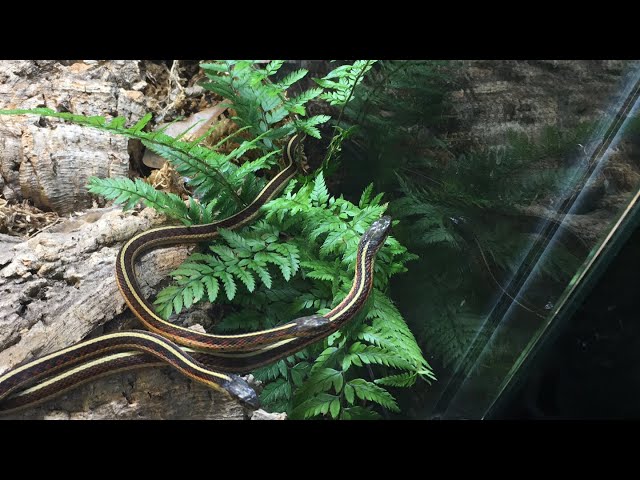
A bioactive vivarium differs fundamentally from traditional reptile enclosures by creating a self-sustaining ecosystem that mimics your snake’s natural habitat. This setup includes a specialized substrate layer system, live plants, beneficial microorganisms, and small invertebrates that serve as a “cleanup crew.” The primary substrate layers typically consist of a drainage layer (using materials like clay balls or gravel), a mesh barrier, a substrate mix with organic materials, leaf litter, and sometimes moss. Within this system, waste is broken down naturally by microorganisms and invertebrates such as springtails and isopods, which consume waste products and dead plant material. Plants not only provide aesthetic appeal and climbing opportunities but also help maintain humidity levels and improve air quality through natural processes. The result is a more natural environment that reduces maintenance needs while providing your snake with enrichment opportunities closer to what they would experience in the wild.
Selecting the Right Bioactive Setup for Your Species
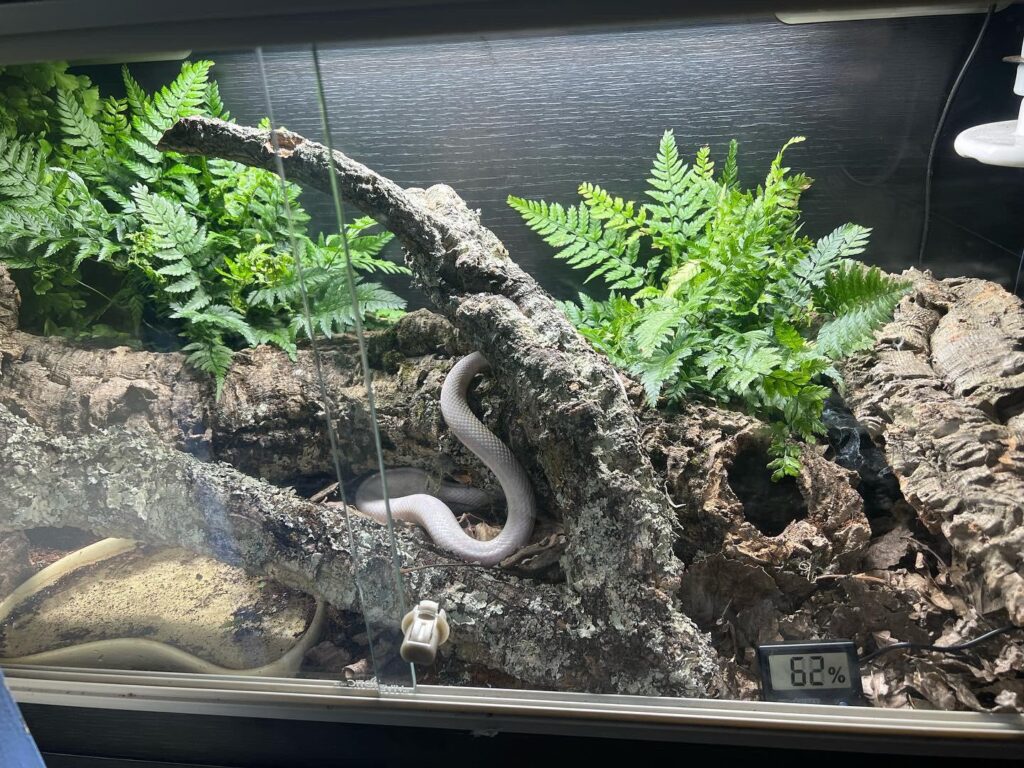
Different snake species require specific environmental conditions that must be reflected in your bioactive setup design. Arboreal species like emerald tree boas or green tree pythons require taller enclosures with ample climbing branches and elevated hiding spots, while terrestrial species such as ball pythons or corn snakes need more floor space with ground-level hides. The substrate composition should also match your snake’s native habitat—tropical species typically need moisture-retaining mixtures with components like coconut fiber and sphagnum moss, while desert-dwelling species require more arid setups with sandier substrates. The plant selection must similarly align with your snake’s natural environment, with drought-resistant succulents suitable for desert species and broader-leaved tropical plants for rainforest dwellers. Research your specific snake species thoroughly before designing your bioactive setup, as creating an environment that closely matches their natural habitat will significantly reduce stress during the transition and promote natural behaviors.
Preparing Your Bioactive Vivarium Before Introduction
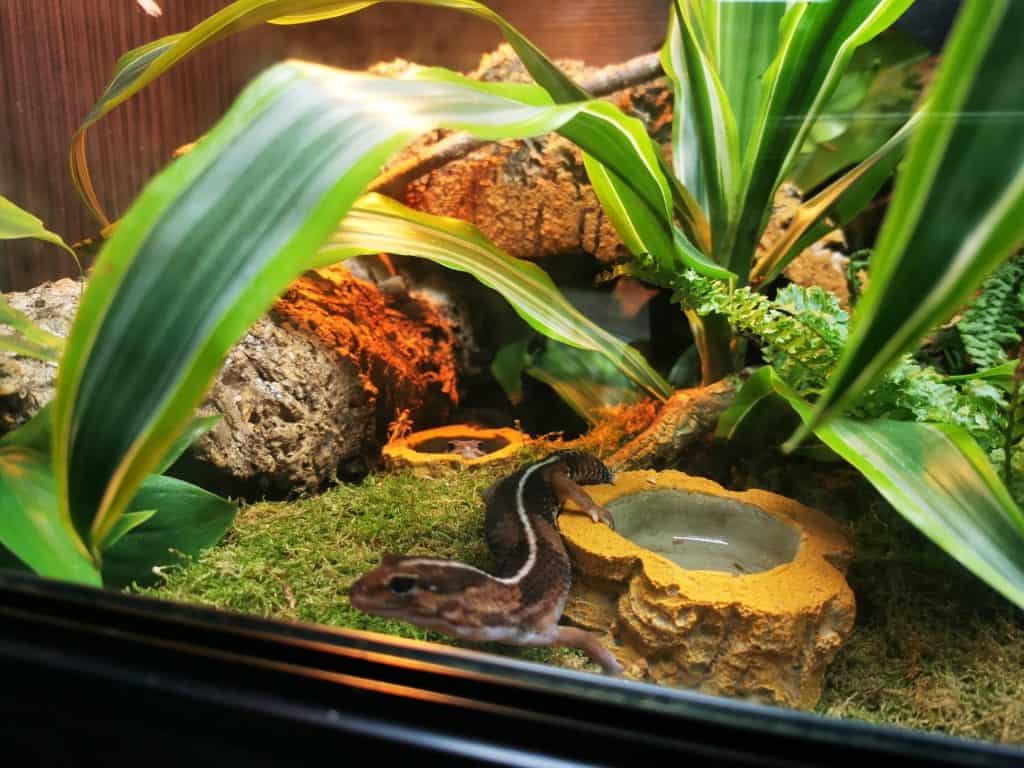
A successful bioactive system requires significant preparation time before introducing your snake. After assembling the physical components of your vivarium, you should allow a minimum of 4-6 weeks for the system to establish and stabilize—a process often called the “cycling period.” During this time, the cleanup crew populations will establish themselves, beneficial bacteria will colonize the substrate, and plants will begin to root and adapt to the environment. Monitor humidity levels, temperature gradients, and plant health closely during this period, making adjustments as necessary to create optimal conditions. This establishment period is crucial as it allows the biological processes that make the system self-sustaining to develop properly. Introducing a snake too early can disrupt these developing processes and potentially cause the bioactive elements to fail, leading to a less healthy environment for your pet. Additionally, this waiting period gives you time to ensure all parameters remain stable and suitable for your snake species.
Selecting and Establishing an Effective Cleanup Crew
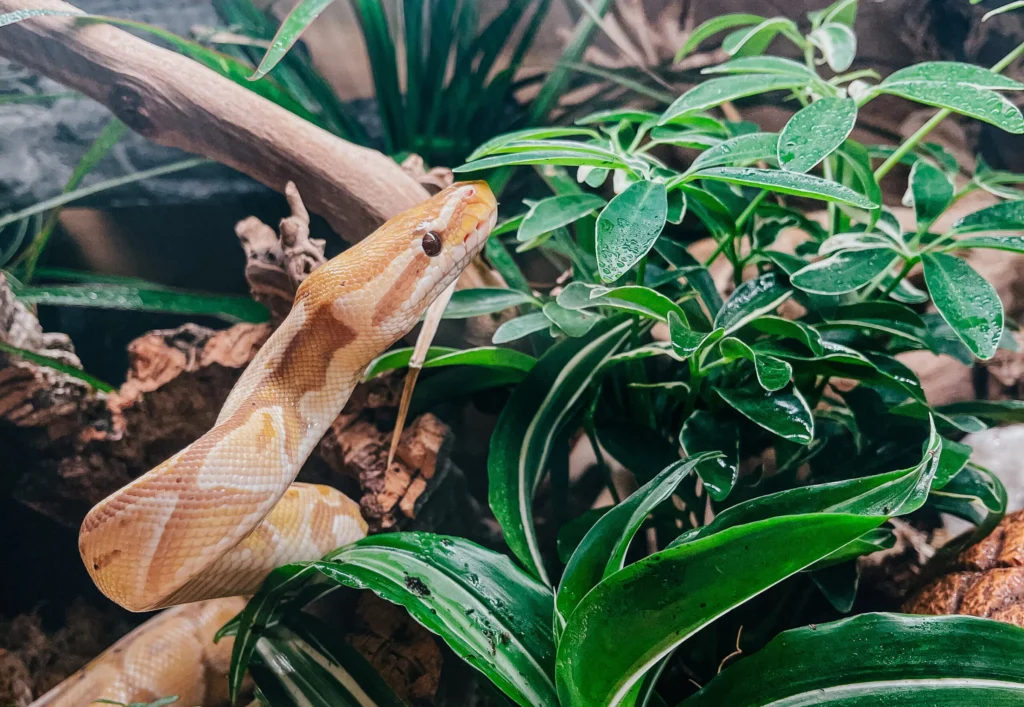
The cleanup crew forms the backbone of a bioactive system’s waste management capabilities and should be established well before introducing your snake. Springtails (Collembola) and isopods (commonly called pill bugs or roly-polies) are the most widely used cleanup crew members, with different species suited to different environments. Tropical setups benefit from moisture-loving varieties like Trichorhina tomentosa (dwarf white isopods) and tropical springtails, while more arid setups might use drought-resistant species like Porcellionides pruinosus (powder blue isopods). These invertebrates consume animal waste, shed skin, dead plant material, and mold, breaking them down into nutrients that benefit the plants in your system. For most standard-sized vivariums, starting with approximately 50-100 springtails and 20-30 isopods provides sufficient initial populations to establish the system. These populations will reproduce and self-regulate based on available food sources, eventually reaching a balanced level appropriate for your enclosure size and waste production.
Choosing Compatible Plants for Snake Vivariums
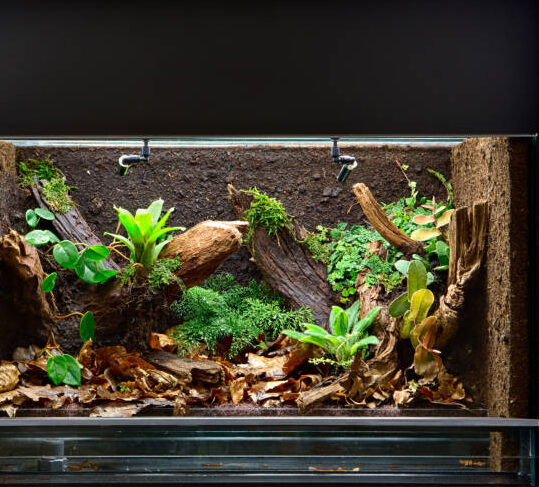
Selecting appropriate plants for your snake’s bioactive vivarium requires consideration of both the plant’s environmental needs and potential interactions with your snake. All plants must be non-toxic to reptiles in case of ingestion, even for primarily carnivorous snakes who might accidentally consume plant matter. Hardy, reptile-safe options include pothos (Epipremnum aureum), snake plants (Sansevieria), various ferns like bird’s nest fern (Asplenium nidus), bromeliads, and certain orchids. Plants must also be able to withstand occasional disturbance from your snake’s movements, making species with robust root systems and flexible stems preferable. Consider your snake’s behaviors when selecting plants—larger, heavier-bodied snakes like ball pythons may require sturdier plants mounted securely, while lighter species might coexist with more delicate vegetation. Position plants strategically to create shelter and climbing opportunities while leaving open areas for your snake to thermoregulate. Anchoring plants securely into the substrate or mounting epiphytes (air plants) on hardscape elements helps prevent uprooting during your snake’s normal activities.
Creating Appropriate Hiding Spots and Temperature Gradients
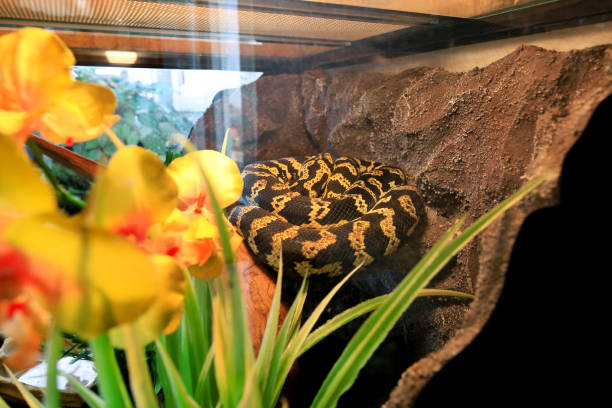
Proper temperature gradients and multiple hiding opportunities are essential for your snake’s health and comfort in a bioactive setup. Most snake species require a temperature gradient allowing them to thermoregulate by moving between warmer and cooler areas, typically ranging from 75-85°F (24-29°C) on the cool side to 88-92°F (31-33°C) at the warm basking spot, with specific requirements varying by species. Create this gradient using heat sources like ceramic heat emitters, radiant heat panels, or heat mats (used externally for bioactive setups) controlled by thermostats. Incorporate at least two secure hides—one in the warm zone and one in the cooler area—allowing your snake to regulate its temperature while feeling secure. In bioactive setups, natural-looking hides can be created using cork rounds, hollowed logs, carefully stacked rocks (ensuring they cannot collapse), and dense plant groupings. These elements should be arranged to create multiple microhabitats within the enclosure, offering varying levels of humidity, temperature, and exposure that allow your snake to select its preferred conditions throughout the day.
Acclimating Your Snake to the New Environment
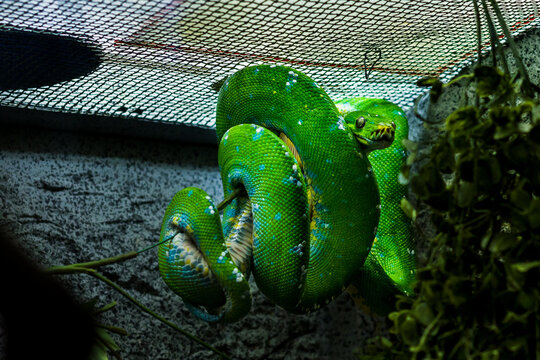
The introduction process should be gradual and controlled to minimize stress for your snake when moving to a bioactive vivarium. Begin by thoroughly cleaning and disinfecting any décor items from your snake’s previous enclosure that you plan to transfer, as these familiar objects can help ease the transition by providing scents and surfaces your snake recognizes. When first introducing your snake, choose a quiet time of day with minimal disturbances and dim lighting to reduce stress. Place your snake gently in the vivarium near a hide, allowing it to enter on its own rather than forcing it inside. Expect an exploration period where your snake may be more active than usual as it investigates its new surroundings. Monitor closely but avoid unnecessary handling for the first 7-10 days to allow proper acclimation. During this period, your snake may not eat, which is normal stress behavior—do not attempt feeding until the animal shows signs of settling in, such as normal movement patterns and using various hides.
Monitoring Health During the Transition Period
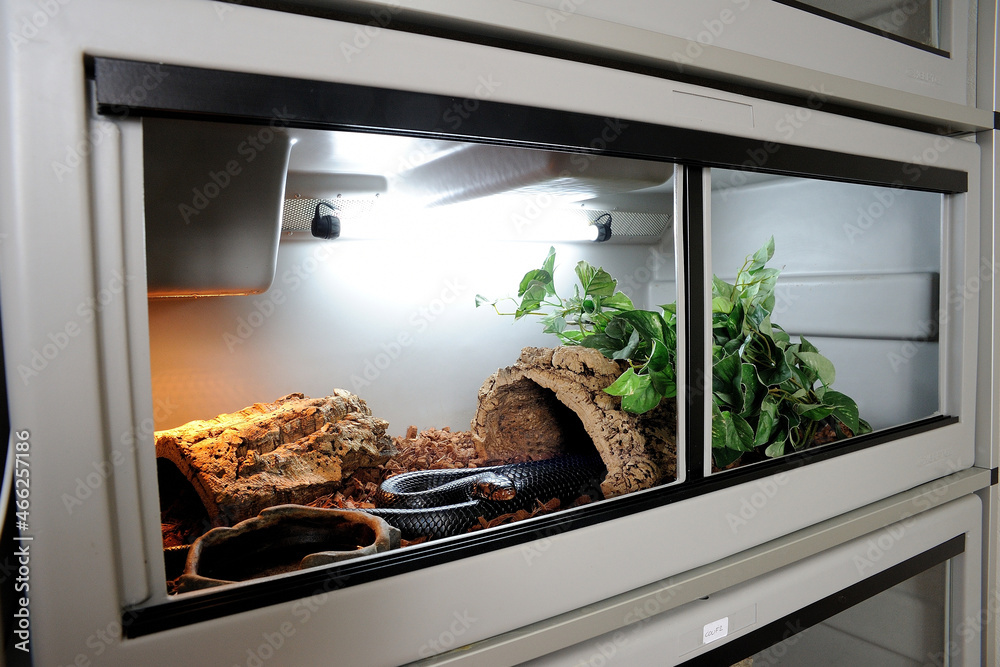
The transition period requires vigilant monitoring of both your snake’s health and the vivarium conditions. Watch for signs of stress like excessive hiding, defensive posturing, refusal to eat for extended periods beyond normal fasting cycles, unusual breathing patterns, or abnormal shedding. Regularly check that the bioactive elements are functioning properly by monitoring humidity levels (which should remain appropriate for your species), checking for mold growth (small amounts might be managed by the cleanup crew, but excessive growth requires intervention), and observing plant health. Weight your snake regularly during this period if possible, without causing additional stress, as significant weight loss could indicate problems adjusting to the new environment. Keep detailed records of behavior, feeding, and physical condition during the transition, which typically lasts 3-4 weeks for most species but may be longer for more sensitive individuals. If problems persist beyond this period, consult with a reptile veterinarian and consider whether the bioactive setup may need modifications to better suit your individual snake’s needs.
Feeding Considerations in a Bioactive Setup
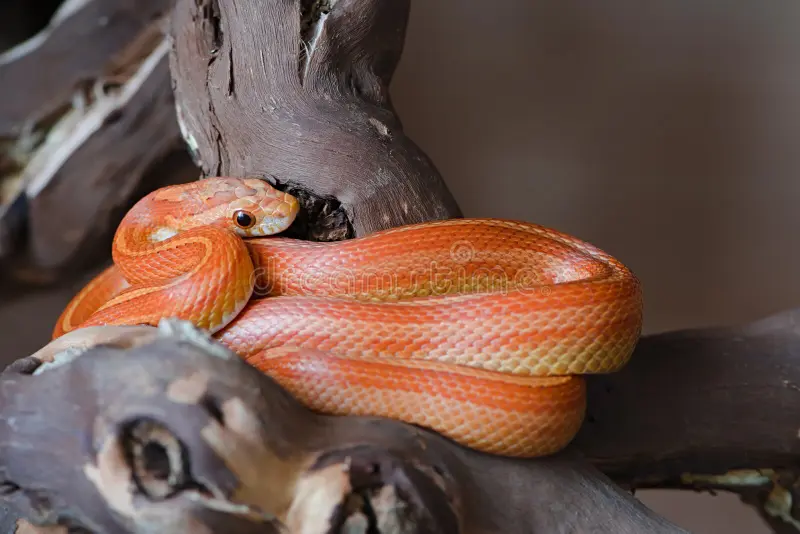
Feeding practices require adjustment when transitioning to a bioactive vivarium to protect both your snake and the living elements of the ecosystem. Many experienced keepers recommend using a separate feeding container for the first several feeding sessions until your snake is fully acclimated to its new environment, which prevents accidental substrate ingestion and protects the cleanup crew from being disturbed. When transitioning to in-vivarium feeding, use a large, flat feeding dish or feeding tongs to offer prey items, minimizing the risk of substrate ingestion, which could lead to impaction. If your snake refuses food during the transition period, which is common due to stress, don’t be alarmed unless the refusal extends beyond their normal fasting period or is accompanied by weight loss or other health concerns. The bioactive setup may affect feeding response both positively and negatively—some snakes become more active and show improved appetite in naturalistic settings, while others may initially be overwhelmed by the increased stimuli. Monitor closely and be prepared to adjust your feeding strategy based on your individual snake’s response to the new environment.
Managing Waste and Maintaining the Bioactive System
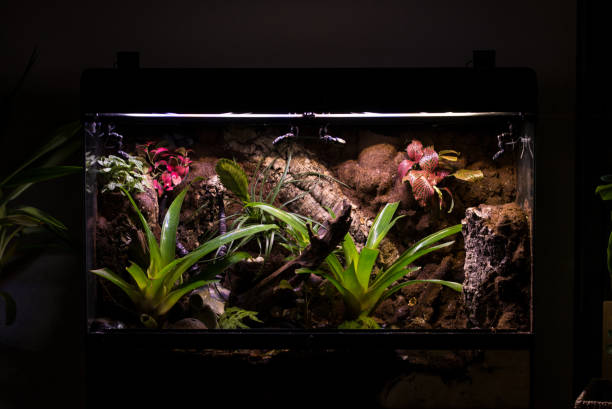
While bioactive vivariums are designed to process waste naturally, proper management remains essential for system health and your snake’s wellbeing. Although the cleanup crew will consume feces, shed skin, and deceased prey remnants, large waste items should still be removed promptly, particularly if they’re deposited in water features or areas with poor cleanup crew access. This selective spot-cleaning helps maintain system balance without disrupting the established microbiome. Monitor the cleanup crew populations to ensure they remain healthy and adequate for your system’s needs—declining populations might indicate environmental problems or insufficient food sources, while overpopulation can sometimes stress certain snake species. Regular, gentle misting helps maintain humidity and supports both plant and cleanup crew health, but avoid saturating the substrate to prevent anaerobic conditions that could lead to harmful bacterial growth. Unlike traditional enclosures, full substrate changes are unnecessary and counterproductive in bioactive systems, as they would remove the established beneficial microorganisms. Instead, occasionally top off the substrate as needed and add fresh leaf litter every few months to provide new food sources for your cleanup crew.
Troubleshooting Common Issues
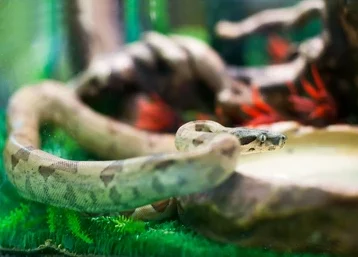
Even well-planned bioactive vivariums can develop issues that require intervention to maintain a healthy environment for your snake. Excessive plant death might indicate improper lighting (insufficient spectrum or duration), inappropriate plant selection for your conditions, or damage from your snake’s activities, requiring adjustments to light fixtures or the selection of more robust plant species. Mold outbreaks beyond what your cleanup crew can manage often signal ventilation problems or overwatering, necessitating increased air flow and adjusted watering practices. An unpleasant odor typically indicates that waste is not being properly processed, which might require augmenting your cleanup crew population or addressing areas where waste accumulates beyond their reach. If your cleanup crew population crashes unexpectedly, investigate potential causes such as predation by escaped feeder insects, improper humidity levels, or contamination from any treatments used on your snake (such as mite treatments). For snakes showing persistent stress behaviors despite appropriate acclimation time, consider whether the bioactive setup might be too stimulating for that individual—some specimens, particularly those kept in minimalist conditions for extended periods, may prefer simpler environments and might benefit from a modified approach with fewer plants and more covered areas.
Long-term Success and Bioactive System Evolution
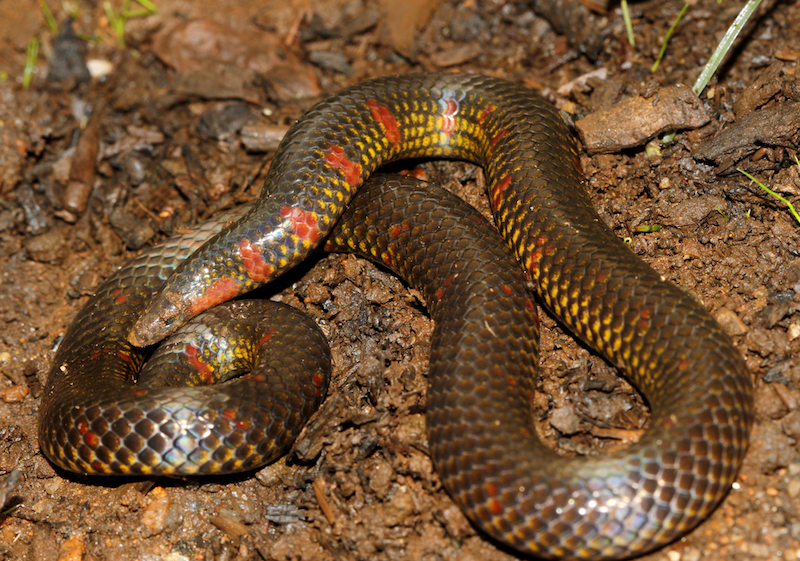
A successful bioactive vivarium evolves into an increasingly stable and self-sustaining ecosystem. After the initial establishment period and successful snake introduction, expect your system to undergo several phases of development over the first year. Plants will grow and potentially require occasional pruning to maintain appropriate space for your snake, while the cleanup crew populations will fluctuate before reaching a balanced level based on the available food sources in your specific system. The substrate will develop more complex microbial communities, often becoming more effective at processing waste and supporting plant growth. This maturation process typically results in a more stable environment requiring less frequent intervention. As your system ages, you may notice beneficial changes like more consistent humidity levels, reduced odors, and healthier plant growth. Document these developments through photos and notes, which can help you identify trends and make informed adjustments. Many keepers find that their bioactive vivariums become increasingly self-regulating after the first year, with maintenance tasks shifting from crisis management to gentle guidance of the established ecosystem.
Conclusion: The Rewards of Bioactive Snake Keeping
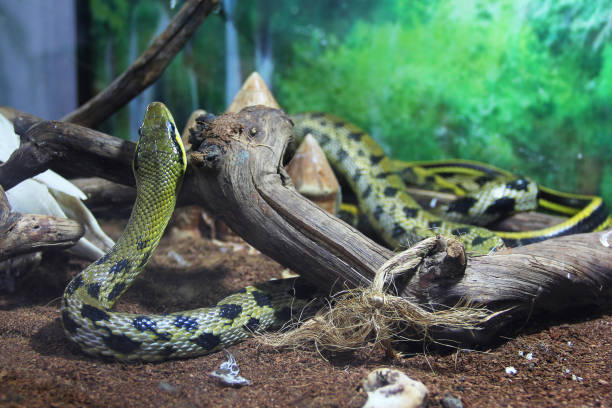
Successfully transitioning a snake to a bioactive vivarium represents a significant achievement in reptile husbandry that benefits both the keeper and the animal. For your snake, the naturalistic environment provides enhanced physical and mental stimulation, opportunities for species-appropriate behaviors, more stable humidity and temperature gradients, and exposure to beneficial microorganisms that may support immune function. As a keeper, you’ll likely experience reduced maintenance needs once the system establishes, a more aesthetically pleasing display that showcases your snake in a natural context, and the satisfaction of creating a miniature ecosystem. The process of establishing and maintaining a bioactive vivarium also deepens your understanding of your snake’s natural history and ecological relationships. While the transition requires patience, careful observation, and occasional troubleshooting, most keepers find that the results justify the additional initial effort. The sight of a healthy snake exploring, hunting, and thriving in a living slice of its natural habitat brings a unique satisfaction that traditional keeping methods rarely provide, creating a more rewarding and educational experience for reptile enthusiasts.




